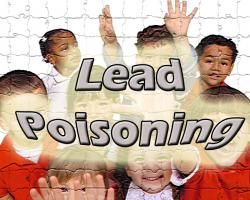
© emaxhealth.com
The number of young children deemed at risk of lead poisoning in Maryland and
nationwide expanded drastically Wednesday as a federal health agency declared it would effectively cut in half its threshold for diagnosing the environmental illness.
Acknowledging mounting evidence that children can suffer lasting harm from ingesting even minute amounts of lead, the Centers for Disease Control and Prevention said it would reduce the level at which it recommends that doctors, families and health authorities act to lower a child's exposure to the toxic metal.Officials estimate the CDC's adoption of a new "reference level" for assessing low-level exposure to lead could add 200,000 children nationwide to 250,000 considered poisoned under the old threshold. In Maryland, the percentage increase is probably even greater. Under the new standard, 3,500 more children statewide would have been added to the 531 who tested positive for lead poisoning in 2010, the most recent year for which figures are available.
But the federal agency's
move comes even as its own funding for fighting lead poisoning has been slashed, leaving state and local governments with fewer resources to tackle what has now been recognized as a much bigger problem.
Baltimore's Health Department, for instance, received $300,000 from the CDC this year to track poisoning cases and help families reduce their children's exposure. Since last summer, according to spokesman Brian Schleter, the department has contacted about 270 families of children whose blood showed levels of lead below the old CDC threshold, offering to visit their homes and share tips on how to reduce exposure.
But those federal funds are due to
run out by September, as Congress this year slashed the CDC's budget to fight lead poisoning from $29 million to $2 million. Schleter said the loss presents "significant budgetary challenges" that could force cuts in staff assigned to deal with a drastically increased caseload.
Since 1991, the CDC's "level of concern" had been a level of lead in a child's blood as low as 10 micrograms per deciliter - as little as 100 parts per billion. But Christopher J. Portier, director of the agency's Center for Environmental Health, said in an interview that studies have shown for years that children with even lower levels can suffer adverse effects, such as learning and behavior problems.
By dropping its threshold, Portier said, the agency is emphasizing what it has been saying for some time:
There is no safe level of exposure.Though poisoning cases occur statewide, the bulk of the lead problem in Maryland has long been in Baltimore, which, according to the Health Department has eight times the nationwide incidence of poisoning cases.
The vast majority of Maryland cases have been linked to ingestion of dust and flakes from lead-based paint, which at one time was widely used in housing. Baltimore banned its use in homes in 1950, and the federal government outlawed its residential use in 1978, but the paint remains in many older houses. Other possible sources include older water pipes, lead dust in soil and imported toys or jewelry made of lead or coated with lead-based paint.
Under the old threshold, the number of lead-poisoning cases in Maryland has declined 98 percent since the mid-1990s, when state law began requiring that owners of pre-1950 rental housing take steps to repair and
clean their units to reduce the risks to young tenants of ingesting lead paint dust or flakes.
State officials say they are already talking about how to respond to the CDC's action. Maryland's lead poisoning laws are based on the old poisoning threshold, officials note, so the law might have to be changed before the state can take regulatory action to further reduce exposure levels.
"There are practical barriers to doing that, but lower lead levels are better for kids, and the best level for kids is zero," said Dr. Clifford S. Mitchell, head of environmental health in the Maryland Department of Health and Mental
Hygiene.
One concern is that the state's current blood testing procedure might not be good enough to reliably measure lead at levels below the old CDC threshold, said Horacio A. Tablada, land management director of the Maryland Department of the Environment, who oversees state efforts to reduce lead exposure.
Without more funds, Tablada said, his office might be unable to follow up on a vastly expanded number of new poisoning reports without diluting the attention they give the most serious cases. Ten inspectors now check on pre-1950 rental housing across much of the state, he said, though Baltimore's Health Department handles its own cases.
State health officials, meanwhile, say they are trying to figure out what to advise pediatricians and health-care providers to do with children who show lead below the 10 microgram level in their blood. The new reference level would effectively lower the standard for poisoning to about 5 micrograms per deciliter.
Comment: Lead is a serious concern, particularly for children, and it is more prevalent that you might think. Fortunately, there are some ways to detoxify the body from this and other toxins.
Childhood Lead Poisoning Linked to Permanent Brain Damage
Lead found in toys, backpacks in U.S. stores
Lead found in reusable shopping bags
Lipsticks contain lead, consumer group says
Studies Show Danger of Even Small Amounts of Lead in Children's Blood
Natural Ways to Remove Heavy Metals